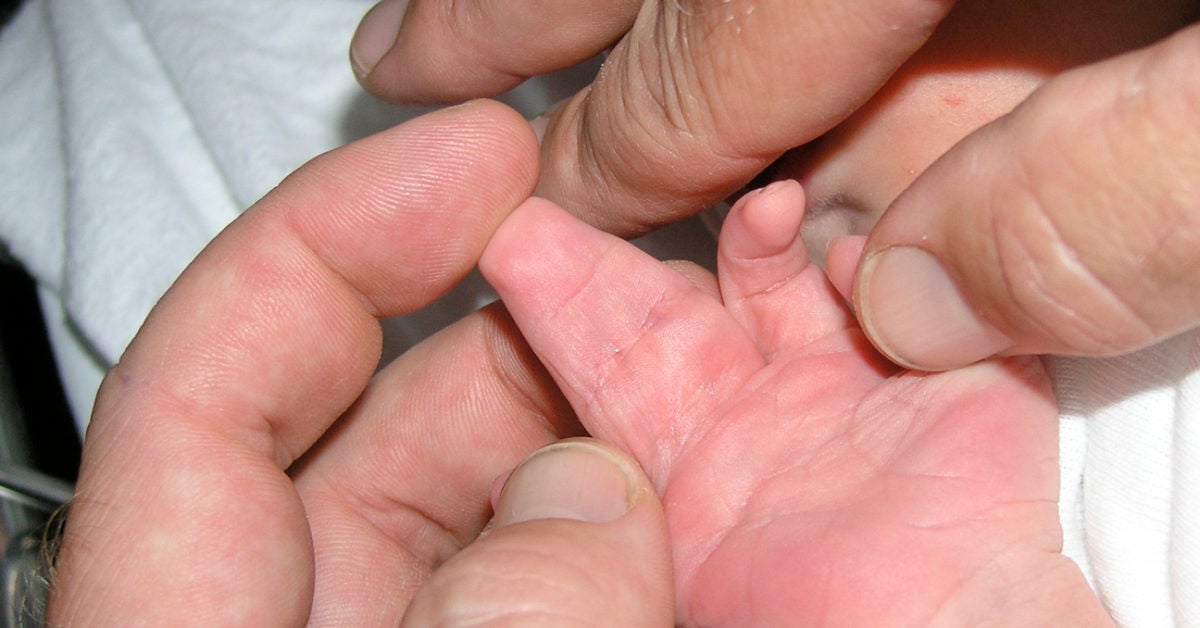

When syndactyly occurs isolated and there is a positive family history, the syndactyly has always an autosomal dominant inheritance (1). 10 – 40 % of the cases have a positive family history (1, 2, 12). Factors that may have affected the intrauterine environment, such as exposure to teratogenic agents, virus infections or other diseases in early pregnancy, are postulated as possible causal hypotheses (2).

The majority of syndactylies occur isolated and with unknown cause. Syndactyly is placed in group II together with other failures in differentiation. In 1976 the International Federation of Societies for Surgery of the Hand introduced a classification system according to which congenital malformations of the upper extremities are classified into seven categories (11). Differentiation of other organ systems proceeds in parallel with that of the hand, which explains associated anomalies in a number of syndactylies (2, 10). The exception to the rule is acrosyndactyly, where the most common form is associated with amniotic band syndrome, which causes fingers to fuse after the separation process is completed (1). This tissue normally involutes from distal to proximal and explains the phenomenon of simple incomplete syndactyly. Most syndactylies appear in this period and can be attributed to errors in programmed cell death (apoptosis), which normally involutes the embryonic interdigital tissue and enables the formation of separate fingers (1, 10). The fingers are normally separated between day 44 – 46.
Webbed fingers skin#
The skin grafts needed to fill in the space between the toes can lead to additional scars in the places where the skin is removed.The development of the hand starts on day 27 of intrauterine life (9, 10). There are also reports of partial web grow-back. In rare instances, nerve damage may lead to loss of feeling in the toes and a tingling sensation. There is usually some degree of scarring, and skin grafts may be required. The end results depend on the extent of the webbing and underlying bone structure. For this reason, many medical professionals do not recommend surgical separation for typical cases. In contrast, when left untreated it is very uncommon for webbed toes to cause complications beyond cosmetic considerations.

Surgical separation of webbed toes is an example of body modification.Īs with any form of surgery, there are risks of complications. Webbed toes can be separated through surgery. Partial simple syndactyly, 4 months post-op In some cases the entire toes, including the nails and bones, can be fused. In some cases the toes are joined part way while in some the webbing can extend right up to the nails. Most cases involve the second and third toes but any number of toes can be involved. Webbed toes are also known as "twin toes," "duck toes," "turkey toes", "tree toes" and "tiger toes." Diagnosis of a specific syndrome is based on family history, medical history, and a physical exam. If other symptoms are present, a specific syndrome may be indicated. This condition is normally discovered at birth. It is also associated with a number of rare conditions, notably: Webbed toes occur most commonly in the following circumstances: Syndactyly occurs when apoptosis or programmed cell death during gestation is absent or incomplete. The scientific name for the condition is syndactyly, although this term covers both webbed fingers and webbed toes. In other cases, no other related persons have this condition. In some cases, close family members may share this condition. The exact cause of the condition is unknown.


 0 kommentar(er)
0 kommentar(er)
